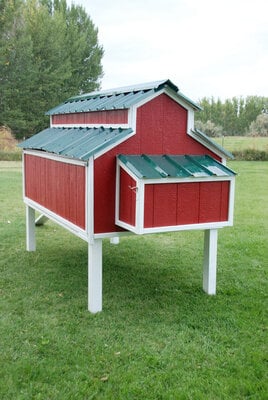City Farmer Jim
Crowing
Is the old adage "more is better" for coop ventilation a good thing? I am in the layout stage of building a new coop. It will be 6x8 with a tall roof and a loft. Here's the question this is planned for 12 standard chickens, there will be 4 24"x24" full flow windows, 10" x 96" soffit vents and a 1.5"x96" ridge vent.. is this to much ventilation? The windows alone are 16 square feet, the soffit vents are 7' ish square feet, plus the roof ridge ventilation. I'm not going to count the entry door or pop door as they will mostly be closed. I do not plan to install gable vents BUT will frame for them or vent fans if need be. I want to thank all that reply in advance. I wish I had known then what I know now about chicken coop construction...ventilation is still a whole other story  lol
lol





